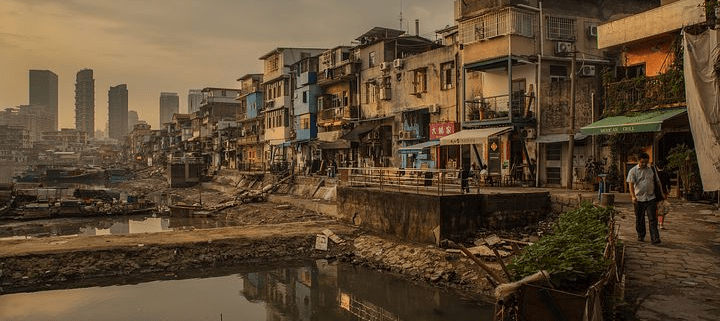What are SDG’s?
Sustainable Development Goals (SDGs) are a list of 17 integrated call-to-action goals set by the UN member states in the year 2015 to end poverty, encourage equality, peace and most importantly, sustainability of natural resources.
Sustainability is a crucial aspect of helping to meet our current environmental, social, and economic needs and desires without compromising future generations’ resources.
The 17 SDGs
1) Poverty
The first SDG goal is to end poverty in all forms globally. Before the COVID-19 pandemic, the world was already off track to end global poverty by the year 2030. The pandemic has further increased global poverty, which means that it is essential for us to scale up operations targeting poverty in order to meet our target.

2) Zero Hunger
This goal encompasses ending world hunger, achieving optimal nutrition, and promoting sustainable agriculture. There is a desperate need for investment in technology and infrastructure to achieve this goal.
3) Good Health and Well-Being
Ensuring healthy living and promoting well-being across all age groups. Due to the pandemic, healthcare and immunization programs have been largely interrupted in approximately seventy countries. Issues relating to air pollution, sanitation, and mental health are also integrated agendas associated with this goal.
4) Quality Education
Providing equal opportunity to inclusive educational resources and learning opportunities to all. This issue has increased exponentially due to the current uprise of remote learning, with technological infrastructure being inaccessible for many children.

5) Gender Equality
This goal focuses on achieving gender equality and empowering women and young girls to challenge social norms, become more politically involved and enter powerful leadership positions.
6) Clean Water and Sanitation
Many countries still lack access to clean, safe drinking water. This goal aims at ensuring the availability and sustainable development of clean water and sanitation systems around the world.
Corteza helps administrators form finely tuned dashboards and workflows to support any water or sanitation system in an area. It ensures efficient resource management and makes sure that water waste is minimized.
7) Affordable and Clean Energy
This goal aims to provide affordable, reliable and sustainable electricity and energy sources to all.
8) Decent Work and Economic Growth
It aims to support other SDG goals while also attempting to ensure decent and productive work employment opportunities, safe workplace environments, eliminating gender pay gaps and promoting sustainable economic growth.
9) Industry, Innovation and Infrastructure
Building inclusive and resilient solid infrastructure and fostering sustainable and innovative industrialisation opportunities. This goal requires a significant amount of investment in research and development initiatives.
Along with physical infrastructure, foundations for strong technological infrastructure must also be laid out. Government’s should be able to prepare for a digitally-driven future. Corteza’s CRM, built by Crust, can offer government bodies all the resources they need to keep up with the digital trends that affect and influence their citizens.

10) Reduced Inequalities
This goal’s main objective is reducing unfair inequality regarding income, power and opportunity within and among different countries. The progress of this goal can be effectively measured using the GINI Index, which measures income inequality from a range of 0 to 100.
Open-source platforms contribute to minimizing digital inequalities. Crust did this by creating a 100% free, open-source low-code platform.
11) Sustainable Cities and Communities
To address unsafe and unsustainable living situations such as slums where access to safe transport, sanitation, and waste collection systems is significantly disproportionate compared to more developed urban areas.
Crust makes the transition of cities into smart cities easy. Smart cities increase the possibility of sustainable development practises in an area by digitizing operations.
12) Responsible Consumption and Production
Focuses on emphasizing responsible consumption of natural resources and material production. However, this goal’s progress is being slowed by massive global increases in material consumption and production.
13) Climate Action
Taking urgent action towards mitigating climate change and its consequent environmental impacts. This goal further focuses on reducing climate change contributing factors such as greenhouse gas emission rates.
14) Life Below Water
Focuses on conserving aquatic wildlife and ecosystems in natural water bodies. Overfishing, water pollution, ocean acidification and unregulated aquatic agriculture all can contribute to a steep decline in marine life biodiversity and resources.
15) Life on Land
Land degradation such as deforestation and wildlife poaching have significantly led to concerns about available natural resources, loss of biodiversity and destruction of wildlife ecosystems. Therefore, this SDG goal focuses on protecting, restoring and promoting sustainability in terrestrial ecosystems and forest areas.
16) Peace, Justice and Strong Institutions
Promoting a peaceful and inclusive society with access to strong and accountable institutions. The consistency of the achievement of this goal has varied, with homicide, child abuse and widespread violence on the rise.
17) Partnerships for the Goals
The 17th goal focuses on how the other 16 objectives can be achieved by creating fruitful partnerships and collaborative initiatives. Most of the Sustainable Development Goals (SDGs) require a significant amount of investment funding to be achieved by 2030.

Conclusion
The time available to sustainably protect and restore our planet is running out. The United Nations has committed to achieving all 17 SDGs by the year 2030. However, this will only be possible if UN member states recognize sustainable development as the answer to solving the conflicting challenges we are and will face in the future. And, Crust is here to help.












Leave a Reply
Want to join the discussion?Feel free to contribute!